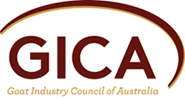Wild dogs present an ever increasing risk to goat producers in mainland Australia with stock losses reported in most major goat producing regions. In some areas, goats can no longer be managed effectively due to pressure from wild dogs.
In an effort to prevent stock losses due to wild dog predation, a number of producers in south west Queensland have collaborated to construct wild dog exclusion fences to protect their sheep and goat operations.
During November 2014, a bus tour was facilitated by Leading Sheep (a partnership program between the Queensland Department of Agriculture, Fisheries and Forestry, Australian Wool Innovation and AgForce) and the South West NRM group to provide producers with the opportunity to visit four properties using exclusion fencing and learn from the initiative.
These properties ranged from being fully fenced (with exclusion fencing) for eight years to those just starting such projects. Participants on the tour were shown a number of different fences and were presented with anecdotes regarding the different types of fences, construction techniques and useful tips to make the job easier.
While the economics of exclusion fencing will vary from property to property and a coordinated approach to wild dog control is recommended, some of the key points from producers who had undertaken exclusion fencing were:
- It can be worthwhile and may pay for itself through improved productivity and the ability to rest paddocks. One producer estimates that lambing has increased from 40% to 100% in the first year.
- Initial preparation of the fence line is critical.
- Use the best fence you can afford.
- The fence height needs to be between 1.5-1.8m – most of the producers recommend a mesh skirt (to prevent dogs from digging under the fence), with posts 6-8m apart.
- In-line strainers are not necessary.
- The maintenance requirement from damage caused by animal pressure is highest in the period after the fence is first built.
- It is important to manage all of the animals that are inside the fence once the fence is completed, including livestock, predators and macropods, to ensure maximum benefit.
Further information
Visit the Leading Sheep website for more information.
